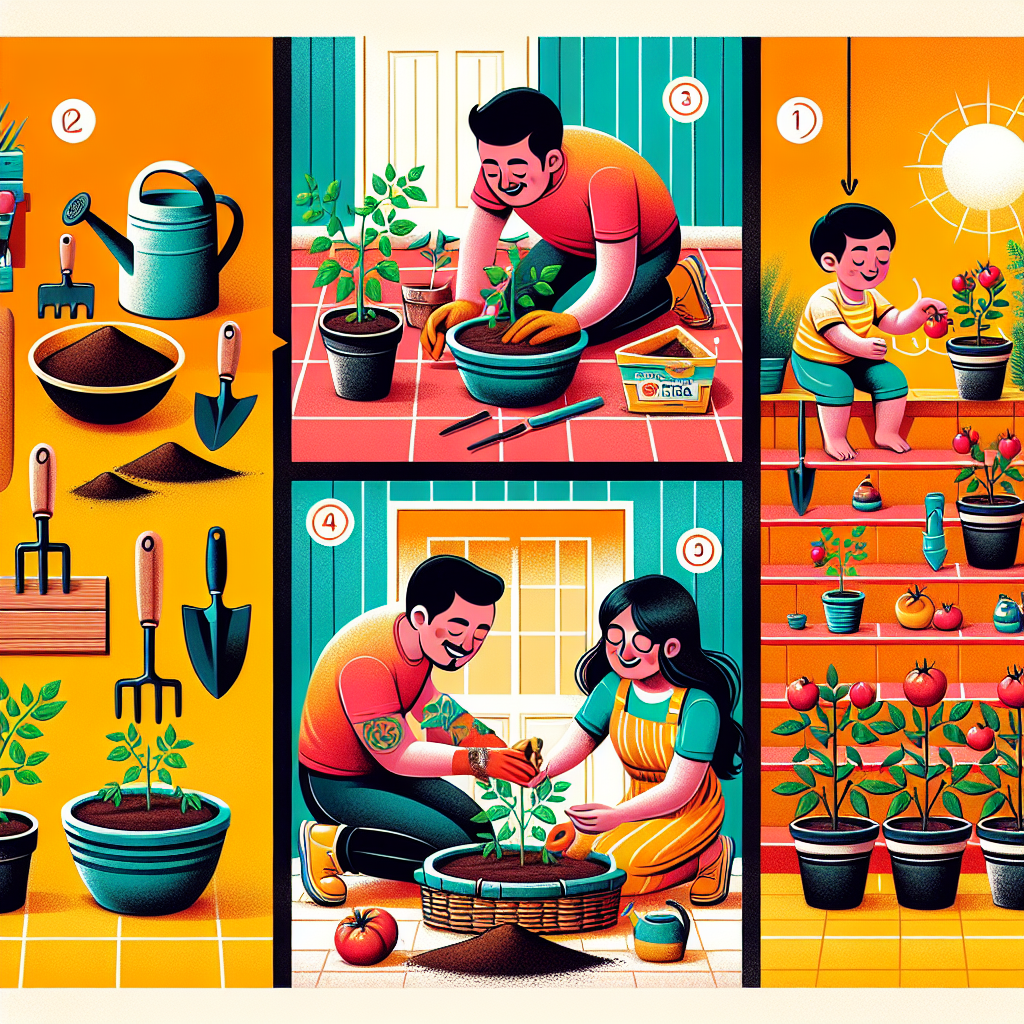
How to plant patio tomatoes
How to Plant Patio Tomatoes: A Comprehensive Guide
Growing your own fruits and vegetables can be a rewarding experience, and there’s nothing quite as satisfying as enjoying the fruits of your labor. When it comes to tomatoes, the patio variety is particularly popular among gardeners with limited space. In this guide, we’ll explore the essential steps and tips for successfully planting and caring for patio tomatoes.
Why Choose Patio Tomatoes?
Patio tomatoes are specifically bred for small spaces, making them an excellent choice for container gardening or small gardens. These varieties tend to be compact, often growing to only 2-3 feet in height. Here are some benefits:
- Space-efficient: Perfect for balconies, decks, or small gardens.
- High yields: Despite their size, patio tomatoes can produce a generous harvest.
- Variety options: Many delicious varieties are available, including cherry and heirloom types.
“Growing patio tomatoes can turn even the smallest garden into a bounty of fresh produce.”
Choosing the Right Container
When considering how to plant patio tomatoes, the container you choose is critical. Here are key aspects to keep in mind:
- Size: A container should be at least 5 gallons for proper root development.
- Material: Options include plastic, ceramic, or wooden containers, each with unique benefits like durability and insulation.
- Drainage: Ensure your container has drainage holes to prevent waterlogging.
Soil Selection
Another vital factor in successfully planting patio tomatoes is the soil type. A good mix of nutrients will lead to healthier plants and better yields. Opt for:
- Potting soil: Use high-quality, well-draining potting soil formulated for container gardening.
- Organic matter: You can mix in compost or worm castings to enrich the soil.
- pH balance: Tomatoes prefer a slightly acidic to neutral soil pH of 6.0 to 7.0.
Planting Your Tomatoes
Now, let's dive into the steps of how to plant patio tomatoes. The appropriate timing and method are essential for thriving tomato plants:
- Select your plants: Choose healthy seedlings from a nursery or start from seeds indoors 6-8 weeks before the last frost date.
- Prepare the container: Fill the container with the soil mix, leaving about an inch of space at the top.
- Planting seedlings: Create a small hole in the soil; gently remove the seedlings from their pots and place them in the holes, covering the roots and burying the stem up to the first set of leaves.
- Watering: Water thoroughly after planting to settle the soil around the roots.
- Staking: If necessary, insert a stake next to the seedling for support as it grows.
- Location: Place your container in a sunny spot that receives at least 6-8 hours of sunlight daily.
Watering and Fertilizing
Proper hydration and nutrition are critical for growing healthy patio tomatoes. Here’s how to ensure your plants receive the best care:
Watering
Tomatoes need regular watering to thrive, especially when grown in containers. Follow these guidelines:
- Water deeply once a week or more frequently in hot weather, ensuring the soil remains moist but not waterlogged.
- Use mulch to help retain moisture and regulate soil temperature.
- Avoid getting water on the leaves, as this can lead to fungal diseases.
Fertilizing
To promote lush growth and abundant fruiting, fertilize your patio tomatoes regularly:
- Use a balanced, slow-release fertilizer when planting.
- Additional feeding with a high-phosphorus fertilizer can support blooming.
- Liquid fertilizers can be applied every 4-6 weeks during the growing season.
Pest and Disease Management
Patio tomatoes, like all plants, can fall prey to pests and diseases. Regular monitoring and proactive measures can help keep your plants healthy:
- Pests: Keep an eye out for aphids, spider mites, and whiteflies. Use insecticidal soap or neem oil to control infestations.
- Disease: Look for signs of blight or leaf curl. Remove any infected foliage promptly and practice crop rotation.
- Preventive care: Maintain good airflow around your plants to reduce disease risks.
Harvesting Your Tomatoes
After diligently caring for your patio tomatoes, it’s time to enjoy the fruits of your labor. Follow these tips for harvesting:
- Wait until the tomatoes have fully ripened on the vine for best flavor.
- The ideal color will depend on the tomato variety; generally, look for vibrant red or yellow hues.
- Gently twist or cut the fruit from the vine to avoid damaging the plant.
- Store harvested tomatoes at room temperature for the best taste—refrigerating can affect flavor and texture.
Conclusion
Understanding how to plant patio tomatoes can enhance your gardening experience, even if space is limited. By selecting the right variety, providing proper care, and maintaining vigilance against pests and diseases, you can enjoy a bountiful harvest of delicious tomatoes right from your patio. Whether you use them in salads, sauces, or simply as a snack, homegrown tomatoes are a delightful treat!
So, roll up your sleeves, gather your supplies, and let the planting begin!
```By Guest, Published on August 14th, 2024